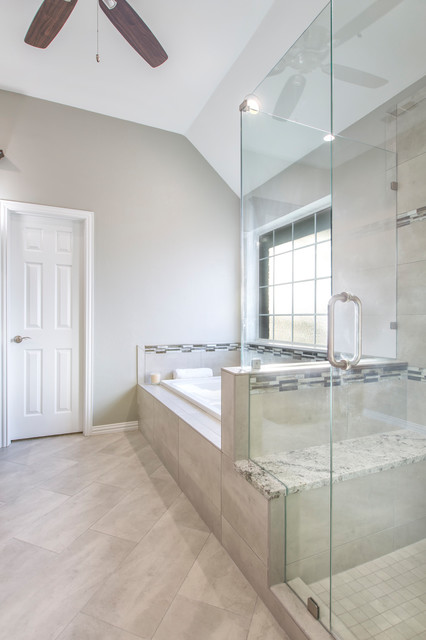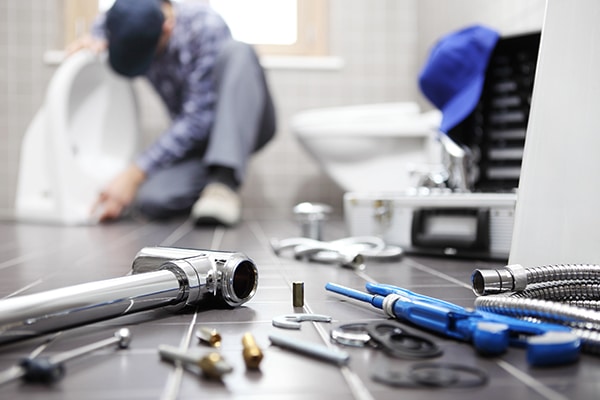Exposing the Future of Plumbing: Developments and Innovations
Exposing the Future of Plumbing: Developments and Innovations
Blog Article
On this page on the next paragraphs you can discover a lot of worthwhile data involving Innovative Plumbing Trends Transforming Construction.

Introduction
The pipes sector is going through a transformative stage driven by technological innovations and growing concerns for sustainability and performance. This post explores emerging patterns and developments forming the future of pipes.
Governing Landscape
Regulatory frameworks play an important role in shaping the adoption of pipes developments, with requirements and codes controling everything from water efficiency to product safety. As innovations continue to progress, regulative bodies need to adapt to guarantee consumer defense and ecological stewardship.
Future Overview
The future of pipes is defined by continued innovation and assimilation with other sectors such as IoT, renewable resource, and building automation. By welcoming sustainable methods, leveraging arising innovations, and focusing on user-centric design, the plumbing sector is positioned to deal with the progressing demands of society while lessening its environmental footprint.
Increased Fact in Pipes
Enhanced Reality (AR) technology is changing pipes by providing service technicians with real-time aesthetic support for repairing and repair service tasks. AR-enabled clever glasses or mobile applications overlay electronic information onto the physical setting, aiding plumbing professionals imagine pipeline designs, determine covert leaks, and implement fixings with precision.
Influence of 3D Printing
The introduction of 3D printing has actually introduced new possibilities in manufacturing plumbing components. From custom-designed fixtures to elaborate pipe fittings, 3D printing enables fast prototyping and on-demand production, lowering preparations and making it possible for better customization in plumbing layout.
Health And Wellness Qualities
In response to heightened worries for health and safety, plumbing components are including attributes such as antimicrobial surfaces, touchless procedure, and self-cleaning mechanisms. These developments not just enhance health yet likewise advertise individual convenience and comfort.
Hygiene-focused Fixtures
Touchless faucets, self-sanitizing commodes, and antimicrobial surfaces are ending up being increasingly prevalent in household and commercial settings, decreasing the risk of germ transmission and promoting a cleaner, healthier atmosphere.
Water Top Quality Tracking
Improvements in water high quality tracking innovations allow home owners to keep track of the pureness and safety of their supply of water in real-time. Smart water high quality sensing units can spot contaminants, pH degrees, and temperature level variations, empowering users to take aggressive procedures to guarantee water safety and security.
Remote Plumbing Solutions
Remote diagnostics and virtual assistance are changing the way pipes solutions are provided. Via video clip conferencing and remote access innovations, plumbing professionals can fix concerns, provide advice for DIY repair work, and also execute remote examinations, supplying better availability and ease to home owners.
Difficulties and Opportunities
While pipes developments hold immense assurance, they additionally present obstacles such as data personal privacy problems, regulative conformity, and the need for labor force training. Attending to these challenges needs collaboration between sector stakeholders and regulative bodies to make sure safe and accountable execution of new innovations.
Smart Pipes Equipments
Incorporating wise technology into pipes systems allows remote tracking, leak discovery, and automated maintenance. Smart sensing units and IoT (Internet of Points) tools enable homeowners and plumbing professionals to monitor water use and detect concerns in real-time, bring about a lot more effective resource management and proactive maintenance.
Water Effectiveness Solutions
With raising focus on water preservation, ingenious remedies are being developed to minimize water waste in pipes systems. High-efficiency components, greywater recycling systems, and clever watering controllers are amongst the technologies assisting customers lower their water footprint while preserving comfort and comfort.
Lasting Materials
The change towards sustainability reaches plumbing products, with an expanding preference for green choices. Eco-friendly piping materials, such as PEX (cross-linked polyethylene) and HDPE (high-density polyethylene), offer toughness and resistance to rust without compromising ecological integrity.
Predictive Upkeep
Anticipating upkeep techniques utilize information analytics and machine learning algorithms to expect and prevent plumbing issues before they happen. By assessing historic information and performance metrics, predictive upkeep algorithms can recognize patterns and anomalies, enabling proactive treatments to stay clear of costly fixings and disturbances.
Final thought
In conclusion, the future of plumbing is specified by a merging of innovation, sustainability, and user-centric design. By accepting smart services, sustainable products, and proactive upkeep methods, the pipes sector can improve performance, promote safety, and contribute to an extra sustainable future.
The Future of Plumbing: Trends and Innovations to Watch
Introduction to Future Plumbing Trends
The future of plumbing is being shaped by several key factors, including technological advancements, environmental concerns, and changing consumer expectations. These factors are driving the development of new products, services, and practices that enhance the efficiency, sustainability, and convenience of plumbing systems.
Key Trends and Innovations in Plumbing
Smart Plumbing Systems: The integration of smart technology into plumbing systems is transforming the way we manage water usage and detect issues. Smart leak detectors, automated water shut-off valves, and smart faucets are just a few examples of how technology is enhancing plumbing systems. These devices provide real-time data and remote control capabilities, allowing homeowners to monitor and manage their water usage more effectively. Water Conservation and Efficiency: With increasing concerns about water scarcity, there is a growing emphasis on water conservation and efficiency. Innovations such as low-flow fixtures, greywater recycling systems, and rainwater harvesting are becoming more popular. Plumbers are adopting these technologies to help customers reduce their water consumption and save on utility bills. Sustainable Materials: The use of sustainable materials in plumbing systems is gaining traction. This includes the adoption of recyclable and biodegradable materials, as well as the use of non-toxic and eco-friendly products. Sustainable materials help reduce the environmental impact of plumbing systems and promote long-term sustainability. Energy-Efficient Water Heaters: Advances in water heating technology are leading to the development of more energy-efficient systems. Tankless water heaters, solar water heaters, and heat pump water heaters are becoming more prevalent. These systems offer significant energy savings and reduce the carbon footprint of homes and businesses. Trenchless Technology: Trenchless technology is revolutionizing the way plumbing repairs and installations are conducted. This method allows for the repair or replacement of pipes without extensive excavation, minimizing disruption and reducing costs. Techniques such as pipe bursting and cured-in-place pipe (CIPP) lining are gaining popularity. Health and Safety: The focus on health and safety is driving innovations in plumbing systems. Touchless faucets and fixtures, antimicrobial materials, and improved water filtration systems are being developed to enhance hygiene and protect public health. Plumbers are adopting these innovations to meet the growing demand for safer and healthier plumbing solutions. Remote Diagnostics and Monitoring: The ability to diagnose and monitor plumbing systems remotely is becoming increasingly important. Remote diagnostic tools and sensors allow plumbers to identify issues and perform maintenance without the need for on-site visits. This enhances efficiency and reduces the need for costly emergency repairs. Impact of Future Trends on the Plumbing Industry
Enhanced Efficiency: The adoption of smart technology and energy-efficient systems will enhance the efficiency of plumbing systems. This will lead to reduced water and energy consumption, lower utility bills, and improved performance. Sustainability: The focus on sustainability will drive the development and adoption of eco-friendly plumbing solutions. This will contribute to the conservation of natural resources, reduction of waste, and protection of the environment. Improved Customer Experience: The integration of technology and innovative solutions will improve the customer experience. Homeowners will have greater control over their plumbing systems, access to real-time data, and the ability to manage their water usage more effectively. Increased Demand for Skilled Plumbers: The adoption of new technologies and materials will require plumbers to acquire new skills and expertise. There will be an increased demand for skilled plumbers who are knowledgeable about the latest trends and innovations. Cost Savings: The use of efficient and sustainable plumbing solutions will result in cost savings for both homeowners and businesses. Reduced water and energy consumption, lower maintenance costs, and fewer emergency repairs will contribute to overall affordability. Preparing for the Future of Plumbing
Stay Informed: Keep up-to-date with the latest trends and innovations in the plumbing industry. Attend industry conferences, participate in training programs, and engage with manufacturers to stay informed. Invest in Training: Ensure that you and your team are trained in the latest technologies and installation techniques. This will enable you to offer cutting-edge solutions to your customers and stay competitive in the market. Promote Sustainable Solutions: Highlight the benefits of eco-friendly and energy-efficient plumbing solutions to your customers. Educate them about the advantages of adopting sustainable practices and products. Leverage Technology: Embrace smart technology and remote diagnostic tools to enhance your services. Offer remote monitoring and maintenance options to provide added convenience and value to your customers. Collaborate with Manufacturers: Partner with manufacturers of innovative plumbing products to gain access to the latest solutions and technical support. This can also provide opportunities for joint marketing efforts. Focus on Customer Education: Educate your customers about the benefits and functionality of new plumbing technologies. Provide guidance on how to use smart systems and maintain sustainable plumbing solutions. Conclusion
The future of plumbing is being shaped by exciting trends and innovations that promise to enhance efficiency, sustainability, and convenience. By staying informed and embracing these changes, plumbers can provide superior services to their customers and contribute to a more sustainable future. The adoption of smart technology, sustainable materials, and energy-efficient systems will drive the evolution of the plumbing industry, creating new opportunities and challenges. By preparing for the future, plumbers can ensure their success in a rapidly changing market.

We were brought to that editorial on from a pal on another web address. Enjoyed our blog? Please quickly share it. Help somebody else check it out. Many thanks for taking the time to read it.
Quote & Schedule Report this page